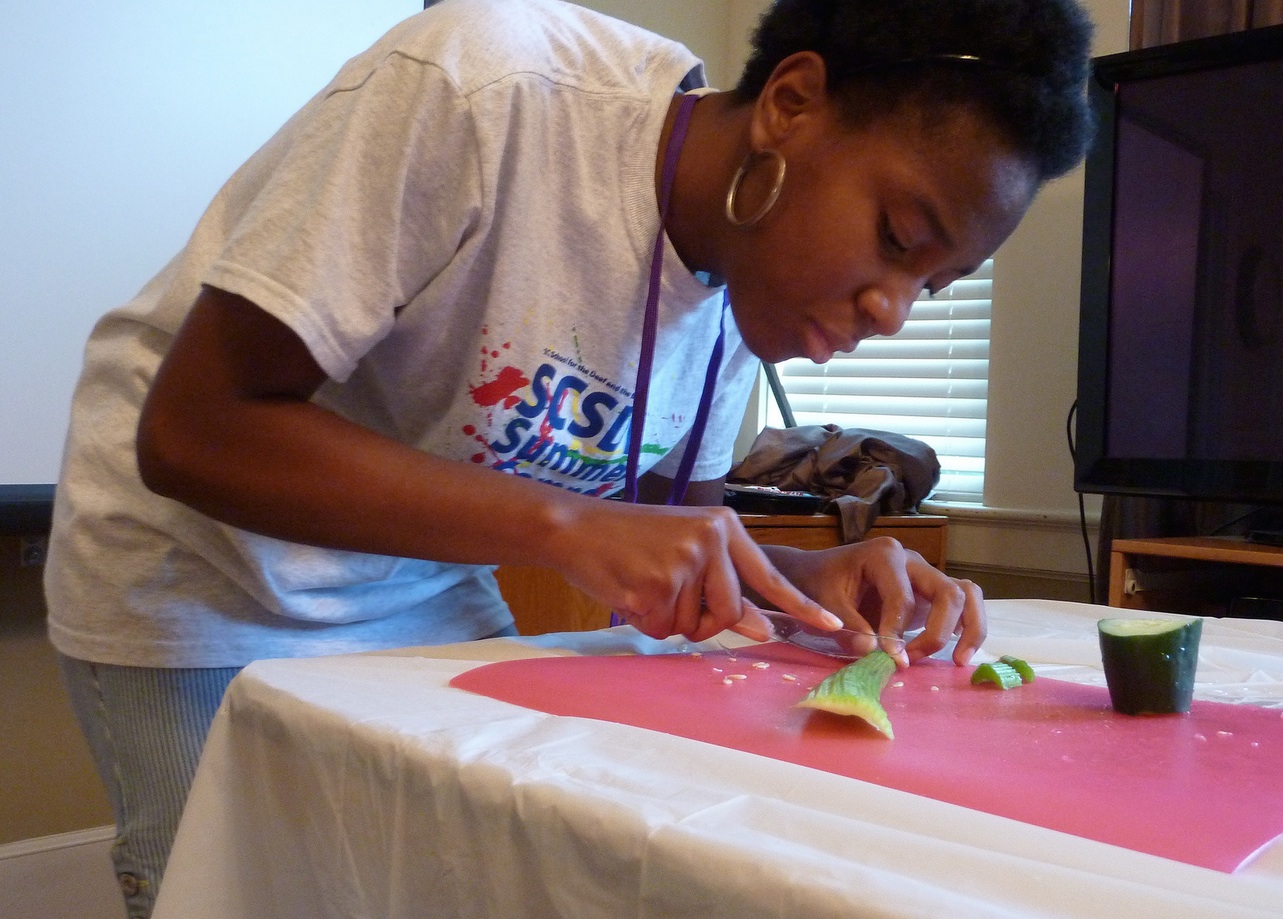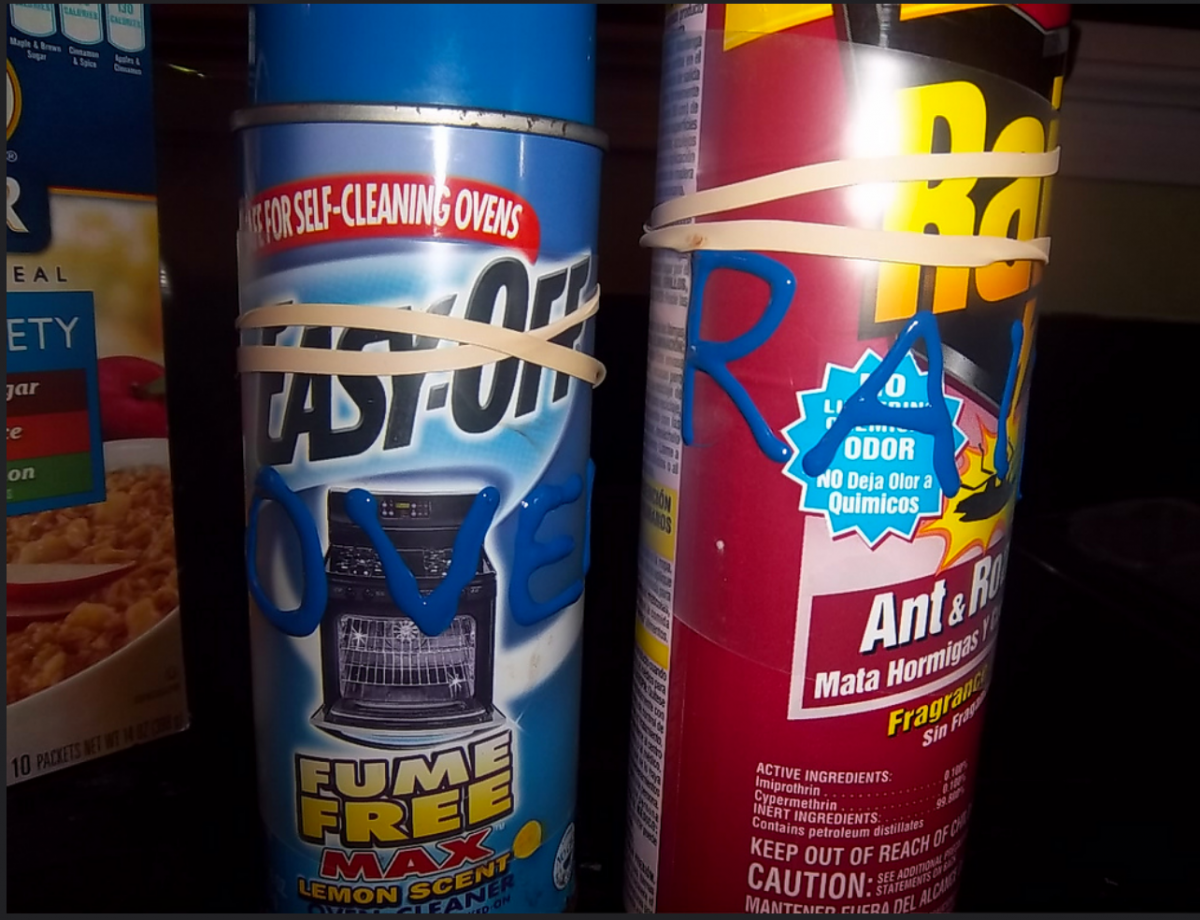Easy Ideas to Promote Independence in Daily Living
Submitted by Jennifer Jeffcoat on Jun 26, 2017

There are many simple ways that people who are blind or visually impaired can be more independent with daily living activities at home. Try some of these adaptations and let us know what other tips have worked for you!
In the Kitchen
- Use measuring cups, cutting boards/mats, and bowls in contrasting colors from the foods being prepared.
- Use tape or high mark dots to mark washing machine, dryer, or dishwasher. Place one on the dial and one on most common setting.

- Place clear tape or label tape over buttons on smooth surface appliances like microwaves to distinguish number pad and function keys.
- Arrange canned and boxed foods in categories and then place on separate shelves in cabinets or pantry.

- Use a permanent high contrast marker, braille label tape, or magnet labels to write on the top of cans an abbreviation of their contents.
- Use colored electrical tape or tapes with different textures to distinguish items like crackers in similar packaging.

- Keep cleaning supplies separated to prevent ammonium and bleach interactions.
For the Laundry Room or Bedroom Closet
- In clothes closets, organize clothes by color with tags on the hangers. The tags will have the colors labeled in large print or braille. Tags can also be purchased and sewn into the clothes.
- Fold or pin socks together by color and separate them in a drawer.
- Mark belts, ties, or shoes on the inside or bottom to distinguish from similar ones.
In the Bathroom
- For water safe distinguishing, place rubber bands of different widths on bottles.
- Label envelopes in high contrast large print or braille and use to store medicines originally packaged in boxes.
General Tips
- If available, use the memo feature on an answering machine to leave notes for self or others.
- Use a recorder (cassette or digital) to list items such as groceries, instructions for medications, or directions for recipes.
This article was originally posted on the BrailleSC website, which was funded by a grant from the US Department of Education with support from the University of South Carolina Upstate and The Maryland Institute for Technology in the Humanities.

